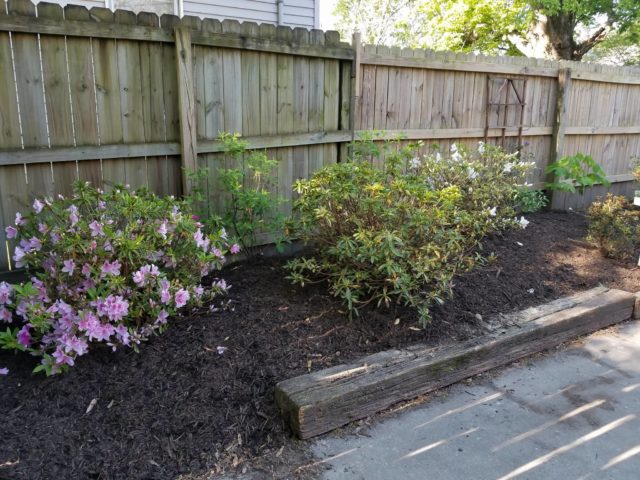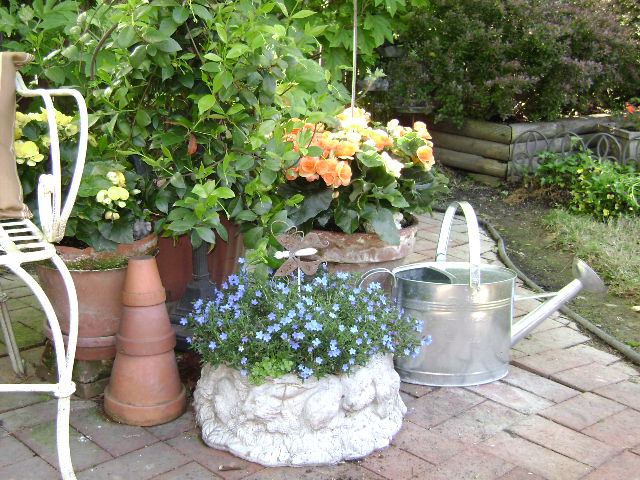It’s the 4th of July….take the day off!
Ornamentals
- Fertilize annuals in July. Please note: Annuals are heavy feeders and must have a continuous supply of nutrients to stay good looking.
- Boost flower power – remove faded flowers to encourage annuals to produce more blooms. Deadheading also encourages some perennials to bloom again – such as coreopsis, purple coneflower, rudbeckia, phlox, shasta daisies, and black-eyed Susan.
- Water wisely – look at plants carefully before you water. Wait until they show signs of wilt then water deeply and thoroughly.
- To prevent diseases, water plants and lawns early in the day so that the foliage dries before sunset.
- Remember to check new plantings throughout the summer:
-
- Trees and shrubs will need a good soaking every week through the first growing season.
- Herbaceous perennials will need regular watering at least for the first couple of months.

- Summer swelter is here! Plants will need consistent moisture more than ever. Spread a couple of inches of mulch atop the soil now. Mulch cools the soil surface and reduces moisture loss.
- Give azaleas an application of cottonseed meal. Pinching out tips of new swigs on azaleas between now and August 15th will give increased bloom next winter/spring.
- Bearded iris can be divided 6 ~ 8 weeks after they have bloomed e.g. in late June or July.
- Pinching back the growing tips on your chrysanthemums around July 4th will yield a stronger, healthier, bushier flowering plant this fall. Same can be said for most fall-blooming plants such as aster, camellia, celosia, salvia, torenia, and zinnia
- Many other plants will benefit from pinching to encourage branching including plants such as asters, marigolds, zinnias, sedum, gomphrena and even petunias.
- Avoid getting water on the leaves of annuals whenever possible. Powdery mildew can become a problem, especially on zinnias but can show up on a wide range of plants.
- Do not prune spring-flowering shrubs and hedges because buds are starting to form now.
- Mid-summer is a good time to remove branches from “bleeder: trees that drip sap when pruned in the winter. These include maple, dogwood birch and elm.
- Japanese beetles are here. Handpick or use an appropriate insecticide. DO NOT use pheromone traps….they attract many more beetles than you would otherwise have.
- Optional – Picture #2

Vegetables
- Check daily for signs of disease or insect damage
- Herbs are generally pest free. However, they sometimes get red spider mites and white fly. Infected plants can be sprayed with tepid soapy water.
- Check the label of all insecticides and fungicides before applying. Pay attention to the number of days to wait before harvesting and the crops and pests on the label.
- Vegetable gardens need one inch of water each week. Provide a good soaking if rain is not adequate. Use drip irrigation or water in the morning. A rain gauge is a great gardener’s aid.
- Once cucumbers, squash and green beans begin to fruit, check them daily….fruit matures quickly and is best harvested while young and tender.
- You can still plant late crops of squash bush beans, and cucumbers before mid-July. Start seeds for broccoli, collards, cabbages, and parsley.
- Cut back basil, mint and oregano to keep them compact, encourage new foliage growth and prevent these herbs from blooming and going to seed.
- Keep a record of what is planted where and what varieties you grew. You will need this information next year for crop rotation.
Lawn
- To reduce the spread of brown patch fungus disease in the lawn, avoid mowing and walking on the lawn when it is wet.
- Fertilize Bermuda and zoysia lawns with a complete fertilizer.
- Mow fescue and bluegrass lawns three (3) inches high. Shorter grass will become drought-stressed and will be more subject to weeds.
- Water lawns any time it shows signs of stress – bluish-gray tint in color, foot-prints remaining when you walk on it, and wilted, curled or folded leaves
- Raise mower blades to 2 1/3 to 3 inches for hot dry weather

Other
- ALWAYS READ THE LABEL – Take a fresh look at the label is important whenever using garden insecticides – whether chemical or organic. Labels tell you what disease, insects or weeds will be controlled, where the product may be used, and any safety precautions.
- Tropicals (canna, banana, gingers) typically love moisture – be generous!
- If you are going to be away from home for more than a one week arrange to have the garden watered and the grass mowed.
- Keep birdbaths clean and filled with water
- Hanging baskets are especially prone to water loss and require very frequent watering.
- Provide support for climbing plants, and tie in the shoots as they grow.
- All spring flowering shrubs should be thinned out by cutting the old wood off at the ground, leaving only the young healthy branches for next year’s season.
- Trees not bearing fruit may produce a lot of water sprouts. Prune them out now to reduce excess growth.
- Protect honeybees. If you must use an insecticide (even organic) spray late in the evening when few bees are active.
